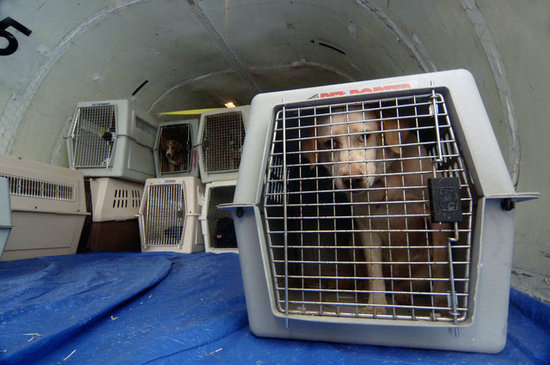Airlines: Sicher Ihr Haustier

Moving is always a pain. If you’re traveling vast distances, it’s a full on headache. You’ve got to have all of your stuff shipped, and pray that it all arrives undamaged. Luckily, there are reputable moving services and insurance for those that can afford it. But what about cargo that’s irreplaceable? What about your dog that’s too big to fit on the flight with you?
Sie können Ihren Hund als eine kontrollierte Tasche zu behandeln, aber Sie sind ein Risiko eingehen. Seit Airlines mit der Berichterstattung über die Zahlen im Jahr 2005 begonnen haben, gab es keine einzige Fluggesellschaft, die im Frachtraum mit einem tadellosen Rekord anfährt. In der Tat, von 2005 bis 2012 gab es 330 Berichte über fehlende, verletzte oder tote Eckzähne. Obwohl dies eine kleine Zahl in Bezug auf die Menge der Haustiere, die tatsächlich versandt wurden, (ein Betrag, der leider nicht gemeldet wird) ist es nicht gerade eine anregende Statistik.

If at all possible, you should avoid shipping your pet via airline. There simply are no guarantees, especially with commercial flights. Though major airlines claim that pets are kept in climate controlled, pressurized, and “pet friendly” cargo area, the fact that there have been 38 cases of pets being lost while en route makes one doubt whether they are being treated as living creatures rather than glorified luggage.
Companies like Pet Airways cater exclusively to pets, and have dedicated staff monitoring them throughout the flight. So there actually are no human passengers on the flights with the pets. This added level of safety and security makes a specific company like Pet airways your best pet shipping option. Other pet specific airlines include names like: Pet Relocation, Air Animal, and 4 Paws on Wheels. Before trusting your pet with any relocation service, it’s important to thoroughly vet the company and exhaustively research your options. So do your homework before making a final choice.
Keep in mind again that it’s much better to avoid having your pet fly in the first place. Unless it is small enough to fit underneath the seat in front of you on the same flight, then you’d be much better served having the animal transported on the ground. Unfortunately, that’s not always an option when you’re traveling over water. So if you must ship your pet, be sure to prepare as much as possible.
Underfeed the pet before boarding, this is to limit the possibilities of a distressed stomach and in-air accidents. Do not sedate your animal, this can have very negative health effects at high altitudes. And be sure to have your pet examined by a veterinarian before takeoff. If you can follow these and any other guidelines given to you by the company you employ, you maximize the chances for a positive traveling experience for you and your pet.





 Alle Artikel
Alle Artikel Tipps und Tricks
Tipps und Tricks Gesundheit und Wohlbefinden
Gesundheit und Wohlbefinden Produktrezensionen
Produktrezensionen Lustig und skurril
Lustig und skurril





